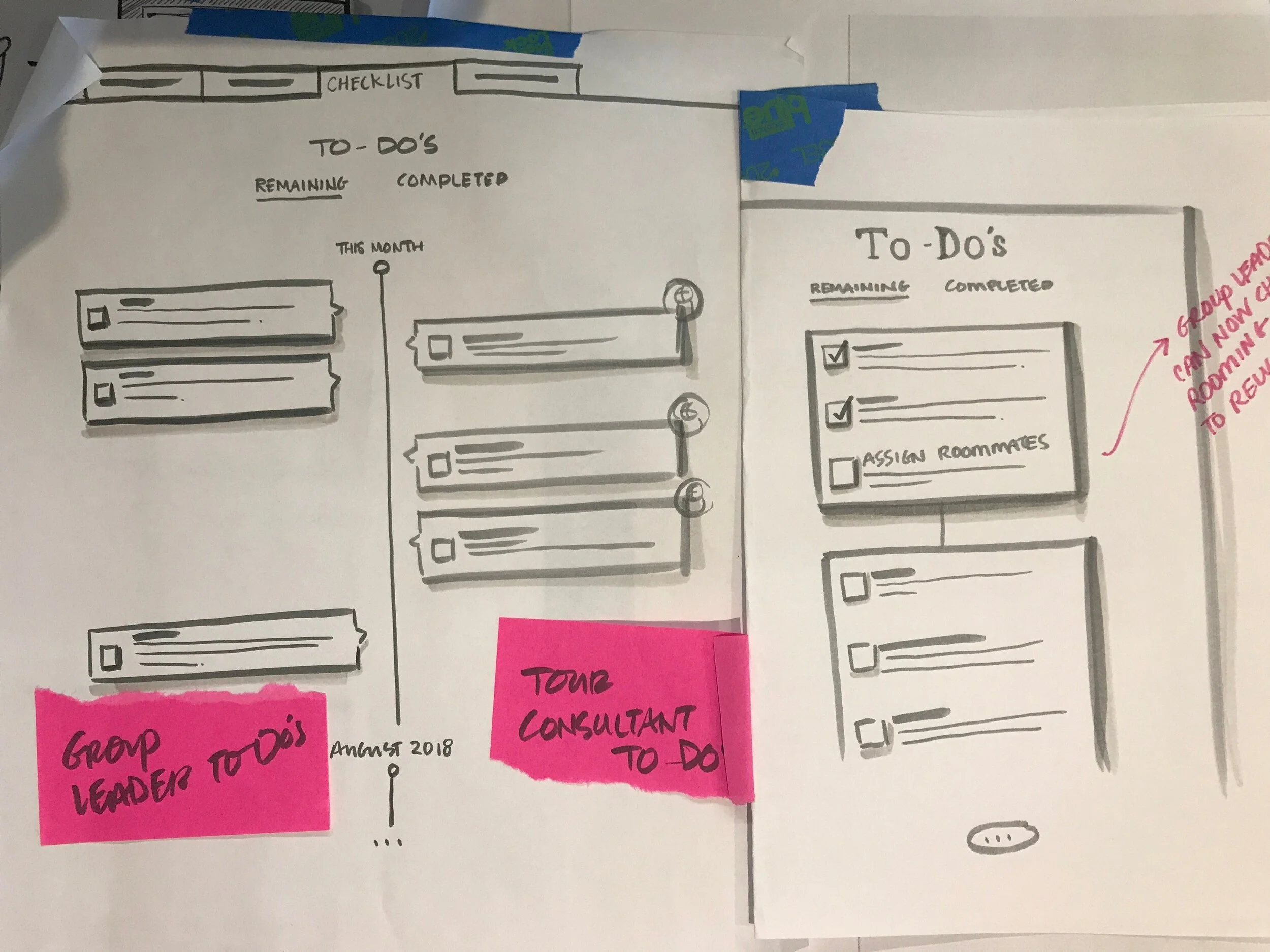The Project
Before our travelers can go on tour there are a list of things that need to get done, and depending on the destination of choice, there could be additional expectations such as applying for a Visa.
Within my first week at EF I was tasked with designing an interactive checklist for our customer to better prepare for tour. The current list of to-do's was a static bulleted list of dense tasks to accomplish, of which many were not written in a task oriented voice. After familiarizing myself with the problem and ecosystem I realized there was more to do than than a simple interactive list;
at a minimum we needed a fun interactive list of to-do's that helped travelers better meet their deadlines
write the to-do's in a way that clearly states the action needed to complete them
reduce busy-work of sales who often have to manually follow up on all of these to-do's for each customer in their pipeline
this new tool should build upon the ongoing relationship between Tour Consultants (sales) and the teacher (customer), not abandon it
design a system that could be leveraged by other parts of the business
THE TEAM
The Navigation and Notification Team (code named "9's") works in an agile framework, planning sprints every 2 weeks. We're a small cross-functional team consisting of a product owner, tech lead, product/UX designer, business analyst/scrum master, front-end developer, and a back-end developer, with part time help from UI and Copy specialists.
This was my first project at EF.
Discovery
Knowing there are several apps and sites that have built out and established good UX principles for an interactive checklist I was less concerned with the UI and interaction design of the checklist as I was the holistic system. I started with an audit of the the static list to find that most of the to-dos listed were not things that could be completed by our customers (and never would be). We also conflated the concept of "alerts" (something that requires an action now) with those that are truly "reminders" (something that require action in the future).
Additional Research
After auditing the existing to-do’s we worked with our sales staff (tour consultants) to see what items they were asking Group Leaders to do outside of the system. This would help up create a more accurate task list for teachers.
Once we had a complete list of items we had various members of EF’s staff involved in the completion of To-do’s to prioritize and organize these items via a Bull’s-Eye Diagram; this included Tour Consultants, Traveler Support, Operations, and a Group Leader, as well as staff who acted as proxy for Parents and Students.
Creating Structure
Once we had our to-do's nailed down, I looked into process. The relationship between sales and customers lasts about 2 years, and in the best case scenario even longer because that customer would have come back as a repeat traveler and purchased additional tours. It was important to keep in mind how sales uses this length of time to build a strong and memorable relationship with their customers; so while offloading some of the busy work to technology is good, we must be sensitive the relationship.
The goal is to reduce busy work, not replace sales.
We landed on a collaborative checklist that both parties could benefit from. Since Tour Consultants have their own set of to-dos, we thought to layer them into the customer checklist. This would give transparency into what the sales rep is working on at any moment in time, and would serve to strengthen the relationship between sales rep and customer.
Designing a Connected System
Having discovered the need for a robust set of strong, actionable alerts, we crafted a content management system (dubbed Notorious CMS) to managed these alerts. This allowed us to easily managed due dates that fluctuate year over year and from tour to tour, and easily integrated into our ecosystem of systems.
In addition to this, we built a series of unique triggers within the checklist that talked to several other systems. The integration with Salesforce, Financial Accounts, Rooming database, etc. will speed up internal processes by eliminating unnecessary players and steps that used to exist for the flow of information.









